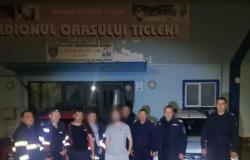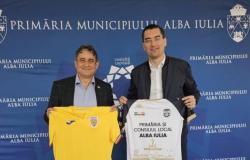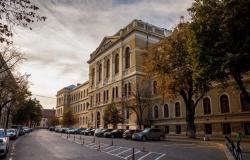Browsing the newspapers of the time, we find several presentations made to Mayor Ioan Robu, which describe both his physical appearance and his personality.
“Small in stature… he was a person who captivated you at the first moment of meeting. A well-mannered man, full of intelligence, possessed by a lively spirit, you felt good and happy to spend a few hours in his company”, this is how the former mayor was characterized in the magazine “Church and School”.
His arrival at the town hall is presented on the front page of the newspaper “Voința poporului”, from September 10, 1930, as follows:
“One day, however, a young officer appears, handsome and with a smiling face. He appears in the antechamber of the town hall and says to a gentleman, I don’t remember who, I am Dr. Ioan Robu, the appointed mayor of Arad. Dr. Robu was led to the mayor’s office and the two Romanians from the mayor’s office run to him to congratulate him and help him”.
Also the “Will of the people” note about Robu:
”(…) thanks and promises to be legal, fair, understanding. He kept his word, only one thing spoiled him, that he got too close to the town hall(…). He was wrong, but he had the chivalry to admit his mistakes and fix them if he could. This chivalry forms the halo of his regime.”
Arad and its town hall, at the beginning of the last century
The population of Arad in 1920 was 62,500 inhabitants, being surpassed in number among the Transylvanian cities of Cluj (83,540), Timișoara (82,600), Oradea (68,080). In the period 1919-1921, the City Hall of Arad had 442 employees. Of these, more than 240 were part of the police, as foot policemen, mounted policemen, detectives. There were 32 firefighters. In a smaller number, the Arad City Hall also employed school doctors, midwives, firefighters, cemetery administrators and guards, laboratory workers, copyist, disinfectant, office servants, parquet cleaners, accountants, civil servants civil, tax officers, orphan guardians, communal judges, prosecutors.
Detailed presentations of the officials employed in Arad City Hall at the beginning of the last century, since the city came under Romanian administration, are made in the studies and works elaborated by Dr. Emil Arbonie.
From the captivity of the Russians to the mayor’s seat
The one who will run the Arad City Hall for 8 years, in two terms, between 1919-1926 and 1927-1928, Ioan Robu sees the light of day in Hălmagiu, on January 30, 1883. He was the son of the notary public Nicolae Robu (1829-1922) and of Alexandra Dobrincu. Ioan Robu had two more brothers, Nicolae (1866-1947), who will become a doctor in Hunedoara county, and Dimitrie.
Lawyer Ioan Robu had, with his wife Valeria, two children, a girl Viorica and a boy Ionel (1911-1978). The name of the son “prof. docent Dr. Eng. Ioan Viorel Robu, scientist and Romanian patriot”, he being buried in the same place as his parents.
The future mayor decides to pursue a legal career.
“He got his lawyer’s license in Cluj and settled in Halmagiu, where the war caught him”, as was noted in “Biserica si Scola”.
With the beginning of the First World War, Ioan Robu is mobilized in the Austrian army, being awarded in the first year of the war with the order “Signum Laudis” for deeds of arms. He ends up imprisoned in the Russian camps in Tomsk and Chernobyl. Organizes the Ardelian and Bucovinine Romanian Volunteer Corps at Darnița. It is sent by the Romanian Prisoners’ Service in Russia to find Romanian prisoners who were in various camps, factories and other places, to organize them and provide them with the best possible living conditions until their repatriation.
The 6th Vânători Regiment, led by Colonel Pirici, will enter our city on May 17, 1919. This is the moment when the administration will be taken over by the Romanians. The Diligent Council is the one that will appoint Dr. Ioan Robu as mayor.
The activity at the town hall
The period in which he led the Arad City Hall was marked by a leaning towards the cultural field, materialized by the purchase of several paintings that enriched the art gallery of the Cultural Palace. The mayor also approves the making by a painter of the portraits of King Ferdinand and Queen Maria, these being painted in life size.
He participated in July 1920, together with Vasile Goldiș and other Arădian leaders, at a meeting in which the re-establishment of the Arădena National Association for the Culture of the Romanian People was established.
In an article from November 1920, the way of working in the Arad City Hall is presented: “The public has recently gotten used to addressing all the business that has to be solved at the city hall directly to the mayor, robbing him of his time and preventing him from solving the business that I fall in his attribution as head of the town hall”.
To facilitate the mayor’s work, persons responsible for:
“passport stuff, industrial stuff and for border delineation certificates, resettlement and repatriation stuff, donation stuff, hospital and children’s asylum, etc.”.
In Arad, Ioan Robu will live in an apartment located in a building on Tudor Vladimirescu Street at no. 17-19.
For his merits, Dr. Ioan Robu was awarded the Order of “Crown of Romania” and “Star of Romania” as an officer.
Studies about the life and activity of Mayor Robu were published by researchers Dr. Felicia Aneta Oarcea and Victor Cațavei.
end
The funeral of the former mayor of Arad, Ioan Robu, took place on September 8, 1930. A catafalque was placed in front of the town hall. A council of seven priests officiated the funeral service.
“Then the metal coffin, which contained the body of the late Dr. Robu, was placed on a hearse pulled by 6 black horses… Military music played a funeral prayer, a company of soldiers gave military honors and the deceased left on the path of follow”.
Vasile Goldiș, Iustin Marșieu, the prefect of the county, Cornel Luțai, the mayor of the city, col. H. Laugier.
On January 19, 1932, the Arad City Hall allocated the sum of 9000 lei for the portraits of three former mayors of Arad: Dr. Ioan Robu, Dr. Stefan Anghel and Dr. Cornel Luțai. These were painted by Carol Wolff.
What do we do for the past?
Learning from Mr. Mihai Vârtaci’s account on social networks, of the not very good condition of Ioan Robu’s grave, we decided to clean the former mayor’s grave. The students of the “Astra” Professional School cleaned the cross, the eternal place and painted the surrounding fence. Since the text engraved on the cross was no longer legible, it was rewritten for free by the iconographer and church painter Pavel Ștefan Cosma.
The following text is engraved on the cross:
“Lawyer Dr. Ioan Robu, born in Halmagiu, lived for 46 years and died on September 6, 1930. He was the first Mayor of the Romanian Arad and served with honor and skill for 8 years in this capacity, being elected by the suffrage of the population of two times. Good and righteous soul, blessed be your memory! This cross was erected by his loving wife, Valeria”.
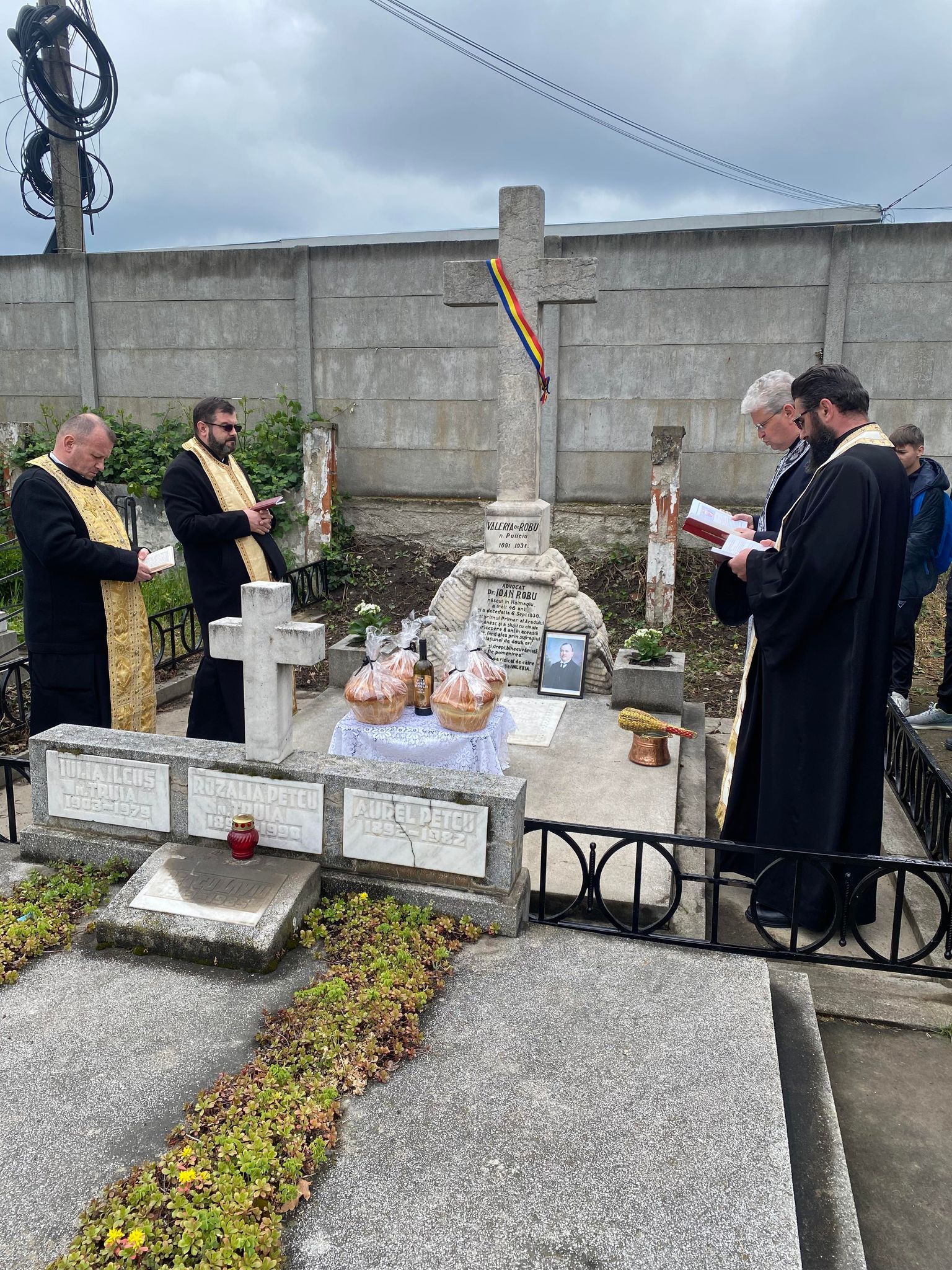
The cross of the former mayor was consecrated by a council of priests. Delegates from the diocesan center with the blessing of the Most Reverend Father Dr. Timotei Seviciu, Archbishop of Arad, with the care of the Most Reverend Father Dr. Emilian Crișanul, Vicar Bishop, at this event were Fr. Gheorghe Gligor, Diocesan Vicar and Fr. Silviu Nicolae Faur, administrative-ecclesiastical adviser with Fr. Petru Ursulescu from the Micalaca Nouă Pasaj Parish and Fr. Tiberiu Brad from the parish of Șela. The council of priests also performed the service of parastas for the family of the former mayor Robu.
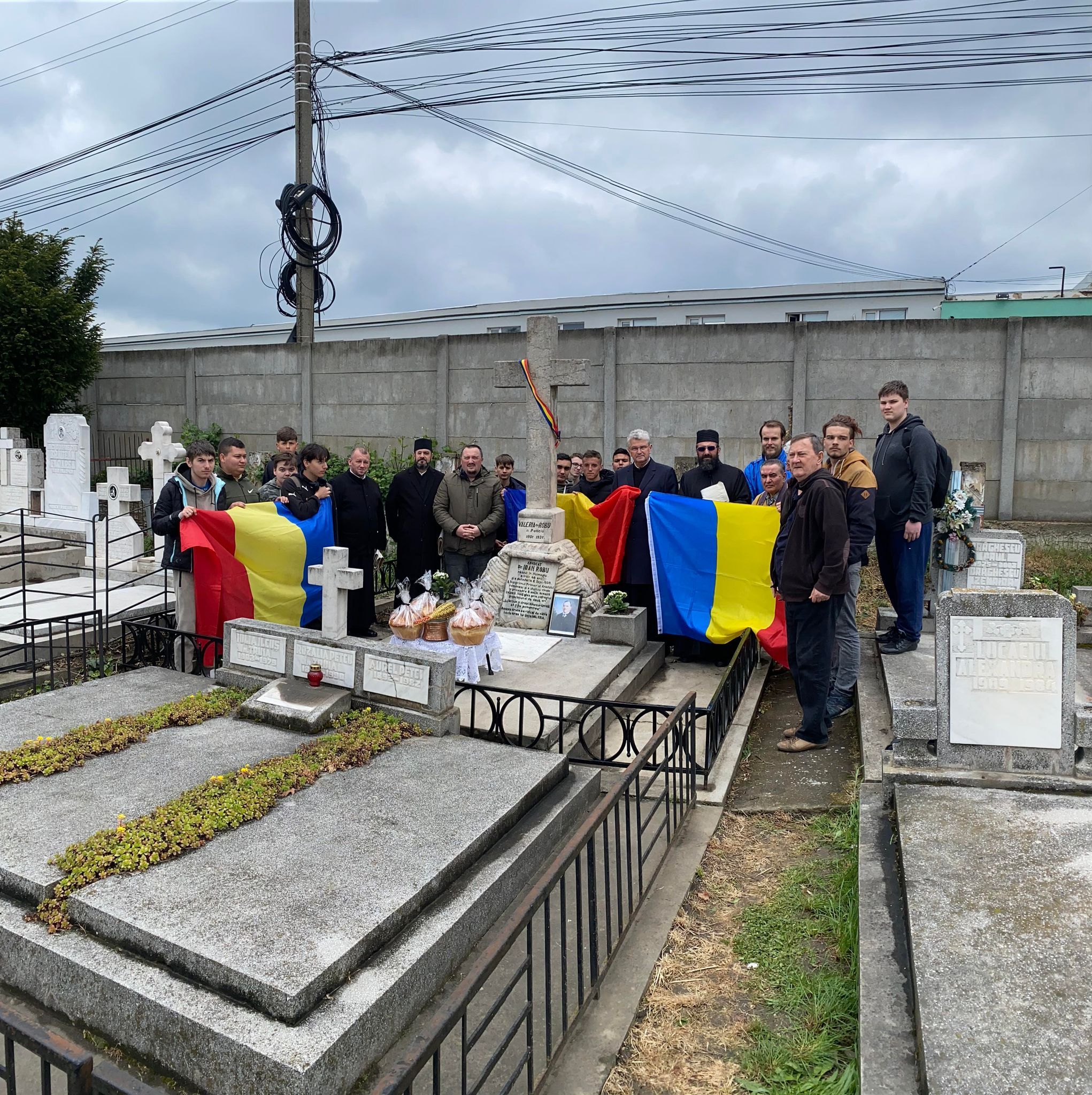
Among others, the historian Doru Bogdan and the archaeologist Eugen were part of the assistance. D. Pădurean, together with teaching staff and students of the “ASTRA” Professional School





